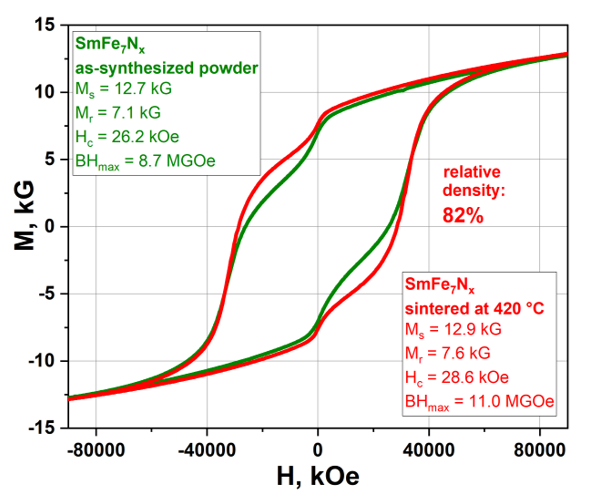CMI researchers at Ames National Laboratory conducted the research for this highlight
Innovation
SmFe7Nx-based hard permanent magnets can be reliably synthesized and consolidated via a mechanochemically-assisted approach.
Achievement
Nitrogenation and sintering of fine, highly crystalline SmFe7 powders yields a bulk permanent magnet with a high relative density of 82%. The magnet has a maximum energy product of BHmax = 11.0 MGOe and coercivity of Hc = 28.6 kOe, both substantial improvements relative to unconsolidated powders.
Significance and Impact
- Cost and criticality: Non-critical, abundant and inexpensive materials like Fe and Sm with additions of La and Ce to improve thermal stability.
- Potential competitor of Nd-based permanent magnets with comparable or better properties.
Hub Goal Addressed
The use of critical rare-earths (Nd, Dy) is reduced through development and deployment of novel permanent magnets based on TbCu7-type materials.

